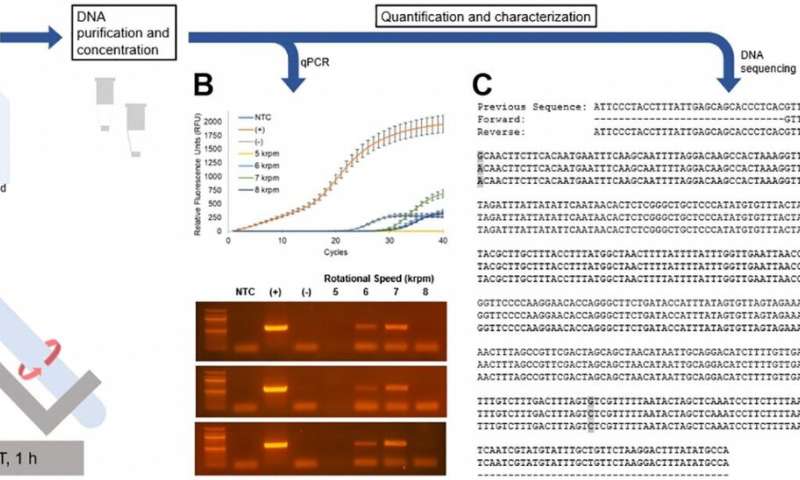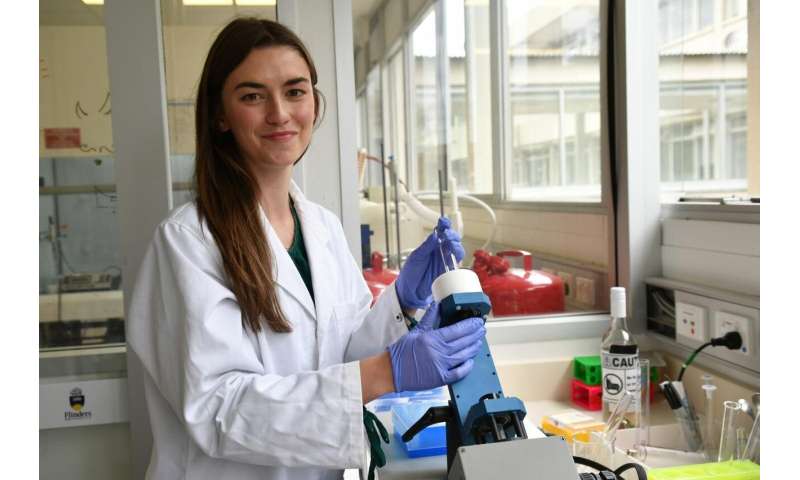DNA extracted in museum samples can reveal genetic secrets
by Science X staff
DNA in preserved museum specimens can allow scientists to explore the history of species and humanities impact on the ecosystem, but samples are typically preserved in formaldehyde which can damage DNA and make very difficult to recover.
Researchers have used a vortex fluidic device (VFD) to speed up DNA extraction from an American lobster preserved in formaldehyde—with the results providing a roadmap for exploring DNA from millions of valuable and even extinct species in museums worldwide.
Flinders PHD candidate Jessica Phillips says processing the preserved tissue from museum specimens in the VFD breaks apart proteins, releasing DNA which offers important historical genetic information.
"DNA extraction is achieved by processing the preserved tissue in an enzyme solution in the VFD. This enzyme breaks apart the proteins, releasing the DNA which can be analysed. By using the VFD we are able to accelerate this process from days to hours," says Ms Phillips.
"For 150 years these samples have been preserved in formaldehyde which can damage the DNA and also make DNA difficult to recover. We used mechanical energy in a vortex fluidic device (VFD) to accelerate the extraction by processing the preserved tissue in an enzyme solution in the VFD."
This work is a collaboration between University of California, Irvine (UCI), The Department of Organismic and Evolutionary Biology at Harvard University, and Flinders University.

Researchers say the results provide a roadmap for exploring DNA from millions of historical and even extinct species in museums worldwide.
Research Chair of Clean Technology Research Professor Colin Raston says the work builds on the body of about 80 papers that his research group has published about the vortex fluidic device.
"Applications of the VFD are rapidly expanding, but this has only been possibly by internal collaboration. The DNA extraction application involved collaboration with two other research laboratories headed by Professor Greg Weiss at UCI and Professor Peter Girguis at Harvard."
"We have only scratched the surface about what is possible for this device," says Professor Raston."
More information: Christian A. Totoiu et al, Vortex fluidics-mediated DNA rescue from formalin-fixed museum specimens, PLOS ONE (2020). DOI: 10.1371/journal.pone.0225807
Journal information: PLoS ONE
Provided by Flinders University